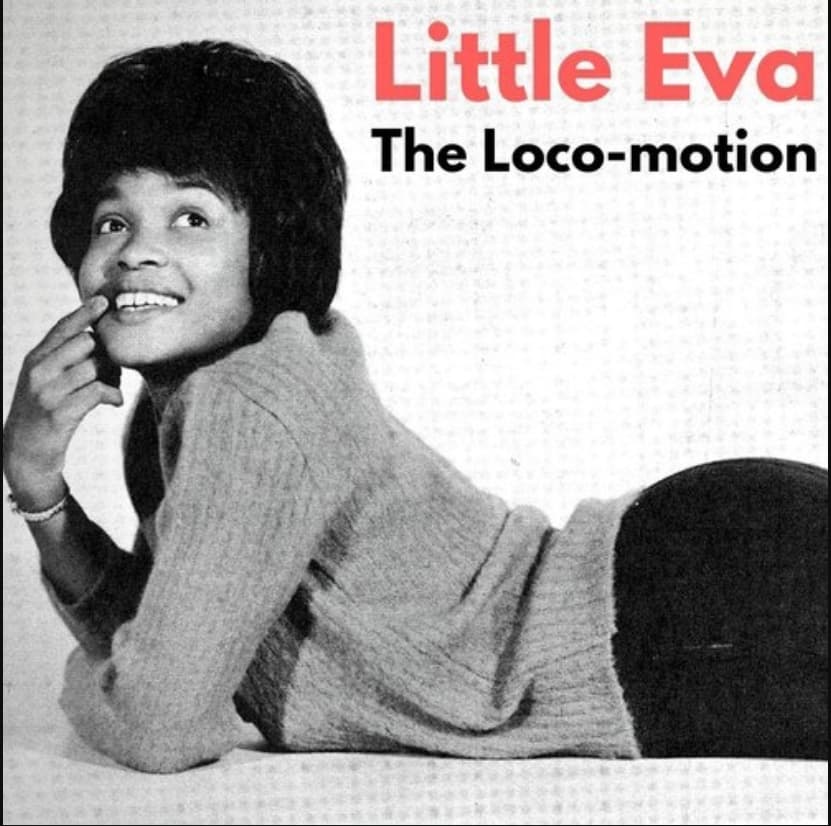
A Timeless Dance Craze Captures the Spirit of a Generation: Little Eva’s “The Locomotion”
Little Eva’s infectious hit, “The Locomotion,” isn’t just a song; it’s a time capsule. Released in the summer of 1962, it rocketed to the top of the Billboard Hot 100, holding the number one spot for a week and becoming one of the defining sounds of the early 1960s. This wasn’t merely a chart-topper; it was a cultural phenomenon, igniting a dance craze that swept across the nation and beyond, leaving an indelible mark on popular culture.
The story behind Little Eva, born Eva Narcissus Boyd, is a classic tale of serendipity in the music industry. She was working as a babysitter for songwriters Carole King and Gerry Goffin, who, upon noticing her unique voice and vibrant personality, penned “The Locomotion” specifically for her. It was a perfect match: Eva’s youthful energy and the song’s catchy melody created an irresistible combination. The song’s simple yet compelling lyrics detail a new dance, inviting everyone to join in the fun. The “Locomotion” itself was a simple, easy-to-learn dance with a train-like chugging motion, making it accessible to everyone, from teenagers at sock hops to families at home. It’s a testament to the power of music to unite people in shared joy.
The song’s production, characteristic of the Brill Building sound, is bright and upbeat, driven by a prominent saxophone riff and handclaps that encourage listeners to move. This “wall of sound” approach, popularized by Phil Spector, gave the record a full, dynamic quality that was perfect for radio play and dancing. Listening to it today, one can almost feel the energy of a packed dance floor, the excitement of a new trend taking hold.
Beyond its immediate popularity as a dance craze, “The Locomotion” speaks to a broader theme of youthful exuberance and the desire for connection. In a time of social change and shifting cultural norms, the song offered a lighthearted escape, a chance to let loose and have fun. For many, it evokes powerful memories of youth, of simpler times, of the thrill of discovering new music and new ways to express themselves. It is more than just a dance song; it’s a nostalgic reminder of a more innocent era.
It is interesting to note that this song achieved remarkable success with a young, relatively unknown artist. Little Eva’s raw talent and the song’s undeniable appeal propelled her into the spotlight, if only briefly. While she continued to record and perform, she never quite replicated the phenomenal success of “The Locomotion,” yet her place in music history was firmly secured by this one iconic hit.
The song’s influence has endured through the decades. It has been covered by numerous artists, most notably by Kylie Minogue in 1987, whose version also became a massive international hit, introducing the “Locomotion” to a new generation. This speaks volumes about the song’s timeless quality – its ability to resonate with audiences across different eras.
For those who lived through the early 1960s, “The Locomotion” is more than just a song; it’s a soundtrack to their youth, a reminder of a time when music had the power to bring people together in shared celebration. It is a testament to the enduring power of a great melody, a catchy rhythm, and the simple joy of dancing. It remains a classic example of a song that perfectly captures the spirit of its time, continuing to inspire and entertain generations of music lovers. The enduring appeal of “The Locomotion” lies in its ability to transport listeners back to a time of youthful energy, carefree fun, and the magic of early rock and roll.